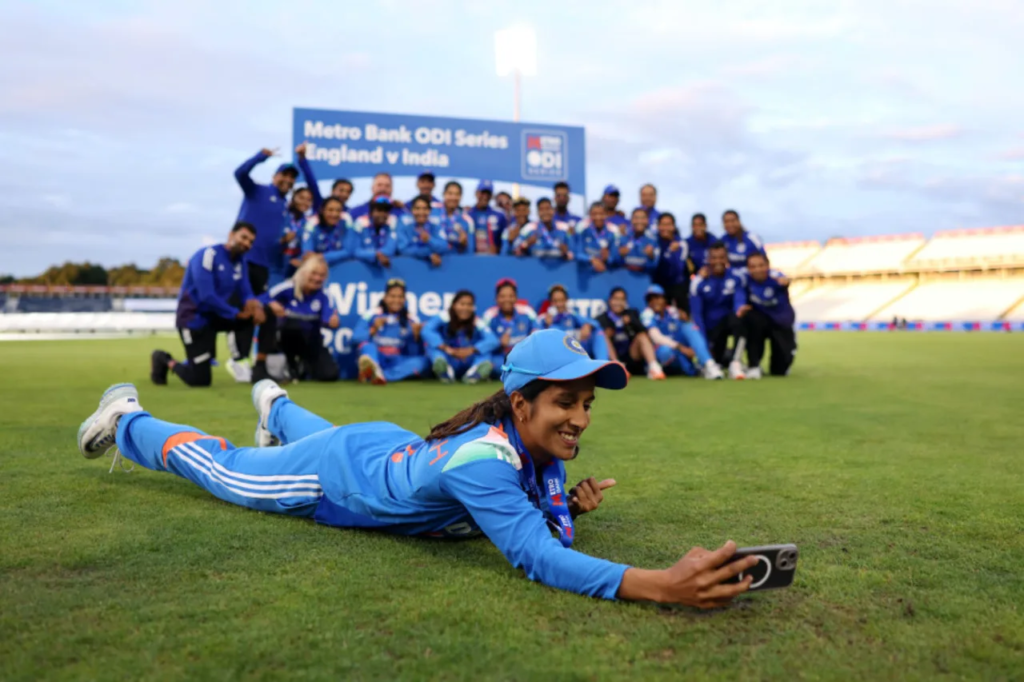
The Women’s World Cup 2025 is an event 12 years in the making, from one world cup in 2013 to this one in two days’ time.
Twelve years ago, India hosted a Women’s World Cup that barely made a dent in the country’s consciousness. Everything is different now.
In order to add some atmosphere to the TV coverage, a few hundred schoolchildren dressed in uniform were herded into specific areas of the stadium during India’s 2013 hosting of the Women’s World Cup.
Days prior to the competition, the locations might be altered in order to accommodate Sachin Tendulkar’s Ranji Trophy final at the city’s largest stadium.
While international teams booked into five-star hotels, India’s senior women’s team practiced by playing matches against the Under-16 and Under-19 boys teams at the Police Gymkhana. The players would then walk back to their low-cost accommodations in South Mumbai.
The team was finally moved into the hotel where the other teams were staying after former India captain Diana Edulji brought attention to their predicament in the country’s media.
Even bringing larger teams within striking distance felt like a win in those days, yet India could take pride in defeating opponents of similar calibre like the West Indies. For example, when a wiry 23-year-old batter who aspired to be like Virender Sehwag batted out of her skin to give England the chills for a short while.
The same powerful batter, who may have played in her final 50-over World Cup at the age of 37, is now India’s skipper thirteen years later. This time, however, Harmanpreet Kaur is surrounded by a generation of athletes who aspire to do more than just compete—they want to win. And India’s women enter a World Cup with every reason to think they could win the title for the first time in fifty years.
Such proposals had sparked mockery in 2013. Despite being governed by the BCCI, women’s cricket was not quite as professional as it is now. In nations like England or Australia, match payments only exceeded INR 1 lakh for a whole tour, and daily allowances came to INR 1500, which was hardly enough to buy a coffee and a snack.
At the 2013 World Cup, Jhulan Goswami and Mithali Raj, who had been playing for her country for 14 years, were the two most known figures in the sport. Although Mithali had already guided India to a World Cup final in 2005, this fact hardly changed the public’s perception.
The landscape is entirely different now. Players often practise against the top opponents, participate in competitive T20 leagues in India and overseas, and train in cutting-edge facilities. India hosted world champions Australia during their tour of England prior to this World Cup. Not at all like when they used to be content with practice games against teams of men’s age.
Tendulkar used to live next door to Jemimah Rodrigues in Mumbai. Seeing him come home to joyous celebrations was one of the things that motivated her to play cricket. Sehwag’s boldness and his propensity to set boundaries at the beginning of his innings enthralled Harmanpreet. Aspiring cricket players today draw inspiration from Radha Yadav’s athleticism, Harmanpreet’s sweep, and Smriti Mandhana’s cover drive.
India’s female athletes are experiencing a revolution in 2025, with equal compensation, record prize money, and a devoted fan base that travels to watch them compete and prepare.
Although India’s journey to the World Cup final in 2017 was heralded as a watershed moment for women’s cricket in the nation, the BCCI may have been a little late in capitalising on that success. But once they did, with the WPL’s 2023 debut, interest in the sport took off. With 31 million viewers, WPL 2025 saw a 142% increase in TV viewership. Even the 2024 trophy ceremony for Royal Challengers Bengaluru attracted a large crowd at Chinnaswamy Stadium, when the men’s team presented them with a guard of honour.
In the past five years, three of the four locations for 2018 World Cup have not played host to a women’s international. Bengaluru, Chennai, Ahmedabad, and Delhi have hosted the majority of India’s recent matches outside of Mumbai. Among these, the WPL’s presence has helped draw sizable audiences to Navi Mumbai’s DY Patil Stadium and Bengaluru’s Chinnaswamy Stadium.
Although DY Patil is anticipated to attract large crowds once more, the focus is now shifting to less well-known locations in Guwahati, Indore, and Visakhapatnam. India has never played in Indore, and their most recent games were in Guwahati in 2019 and Vizag in 2014.
Women’s cricket in India has advanced significantly from fighting for acceptance in 2013 to gaining respect and attention in 2025. The players may finally get a platform of their own at this World Cup.

